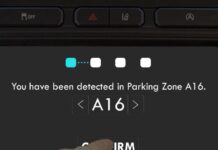Toyota Research Institute (TRI) recently demonstrated programming a vehicle to autonomously drift around obstacles on a closed track. TRI’s Nonlinear Model Predictive Control (NMPC), which extends the vehicle’s operational domain, enables controlled, autonomous drifting to avoid accidents by navigating sudden obstacles or hazardous road conditions like black ice, the company said.
The above video shows that the test was conducted using a Toyota Supra that has been customized for autonomous driving research. The vehicle is equipped with computer-controlled steering, throttle, clutch displacement, sequential transmission and individual wheel braking, the company said. “Vehicle state information is obtained from a dual-antenna RTK-GNSS-aided INS system at a rate of 250Hz, and the NMPC controller runs on an x86 computer,” the company said in a statement.
Last year, TRI and the Dynamic Design Lab at Stanford University partnered to conduct safety testing to help avoid crashes and prevent injuries and fatalities, the company said. Automotive performance specialist GReddy and drift expert driver Ken Gushi also assisted.
Contact: Wendy Rosen, Toyota Research Institute, Wendy.Rosen@tri.global, http://tri.global.


























